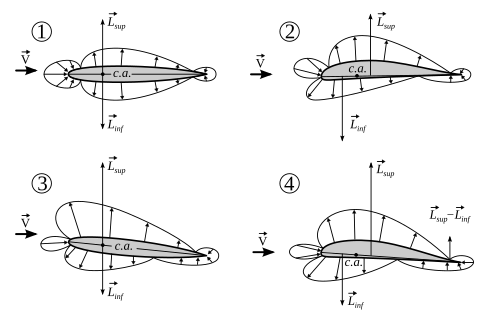This article is written like a personal reflection, personal essay, or argumentative essay that states a Wikipedia editor's personal feelings or presents an original argument about a topic. (November 2017) |

In aerodynamics, the torques or moments acting on an airfoil moving through a fluid can be accounted for by the net lift and net drag applied at some point on the airfoil, and a separate net pitching moment about that point whose magnitude varies with the choice of where the lift is chosen to be applied. The aerodynamic center is the point at which the pitching moment coefficient for the airfoil does not vary with lift coefficient (i.e. angle of attack), making analysis simpler.[1]
- where is the aircraft lift coefficient.
The lift and drag forces can be applied at a single point, the center of pressure. However, the location of the center of pressure moves significantly with a change in angle of attack and is thus impractical for aerodynamic analysis. Instead the aerodynamic center is used and as a result the incremental lift and drag due to change in angle of attack acting at this point is sufficient to describe the aerodynamic forces acting on the given body.
- ^ Benson, Tom (2006). "Aerodynamic Center (ac)". The Beginner's Guide to Aeronautics. NASA Glenn Research Center. Retrieved April 1, 2006.

